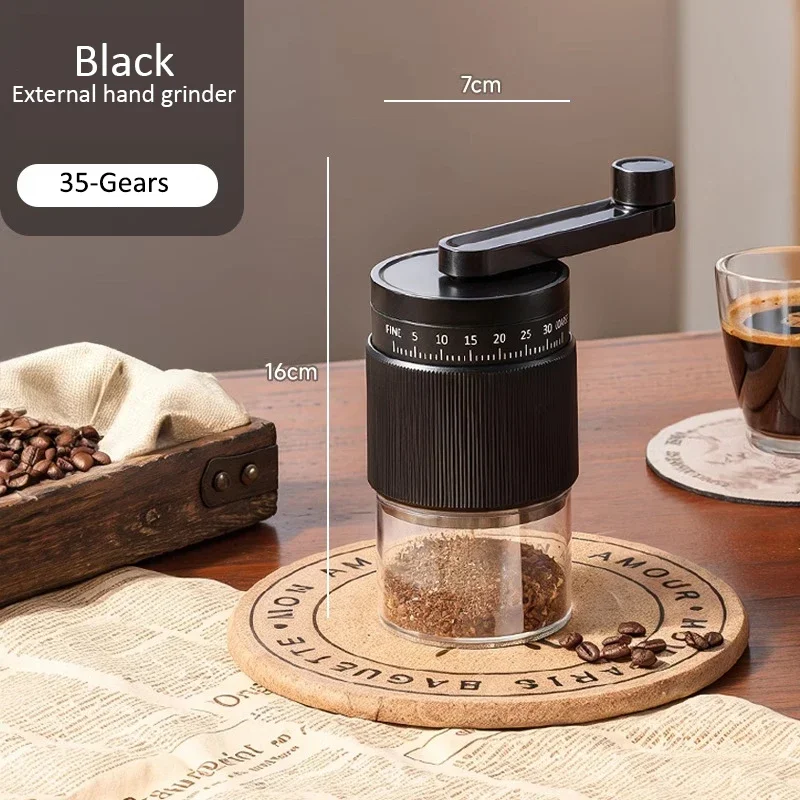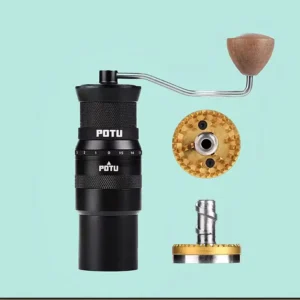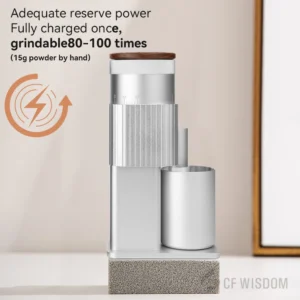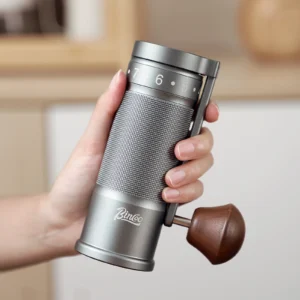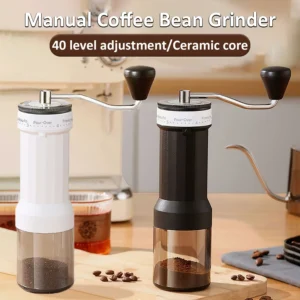1. Understanding Why Grind Size Is the Foundation of Great Coffee
The secret to exceptional coffee lies not just in the beans you select, but crucially in how you grind them. Grind size dramatically affects how flavor compounds are extracted from your coffee—it’s the foundation upon which every great cup is built.
When water flows through coffee grounds, it extracts compounds in a specific sequence: first acids (brightness), then sugars (sweetness), and finally bitter compounds. The size of your coffee particles directly controls this extraction rate. Too fine a grind allows water to extract too many bitter compounds, while too coarse a grind results in weak, sour coffee.
Studies suggest that approximately 30% of flavor compounds are affected by improper grinding, making it as important as bean quality for brewing success. This critical relationship between grind size and extraction explains why coffee professionals are so meticulous about their grinding approach.
The science comes down to surface area—finer grounds expose more coffee to water, accelerating extraction. Understanding mastering espresso precision grind settings helps coffee enthusiasts achieve consistency in their brewing results.
2. Espresso vs. Drip Grind: The Essential Differences
The most fundamental difference between espresso and drip grinds lies in their particle size. Espresso requires a significantly finer grind—typically ranging from 200-400 microns—resembling fine sugar or powder in texture. This fine consistency creates the necessary resistance for pressurized water to extract flavors properly.
Drip coffee, by contrast, uses medium grounds measuring 600-800 microns, similar to the consistency of kosher salt or granulated sugar. This coarser grind allows water to flow at an appropriate rate through a filter while extracting optimal flavor.
The correct grind setting for espresso creates a dense puck that forces pressurized water to extract flavors evenly in 25-30 seconds. Drip coffee’s larger particles slow extraction to the ideal 3-5 minutes while allowing proper water flow through the coffee bed.
These differences aren’t subtle—using the wrong grind can completely transform your coffee experience, usually for the worse. Understanding the ultimate espresso grind size chart helps coffee enthusiasts visualize these important differences.
2.1 Side-by-Side Comparison Table
| Characteristic | Espresso Grind | Drip Grind |
|---|---|---|
| Texture | Very fine powder | Medium granular |
| Visual Comparison | Fine sugar or flour | Kosher salt |
| Particle Size | 200-400 microns | 600-800 microns |
| Feel Between Fingers | Smooth, powdery | Slightly gritty |
| Brewing Method | Espresso machines | Drip, pour-over |
| Water Contact Time | 25-30 seconds | 3-5 minutes |
| Pressure Requirements | 9 bars | Gravity only |
| Optimal Extraction | 18-22% | 18-22% |
| Flow Resistance | High | Moderate |
| Consistency Needs | Very uniform | Relatively uniform |
3. The Science of Coffee Extraction: Why Different Methods Need Different Grinds
Coffee extraction is fundamentally a matter of surface area mathematics. When coffee is ground finer, it creates 2-3 times more surface area for water to contact, dramatically accelerating extraction. This explains why espresso—with its 25-30 second brew time—requires such a fine grind compared to the 3-5 minutes needed for drip brewing.
The science becomes even more fascinating when you consider the sequential extraction of compounds from coffee. Different flavor components dissolve at different rates:
– Acids extract quickly (bright, tart flavors)
– Sugars extract moderately (sweetness, body)
– Bitter compounds extract slowly (bitterness, astringency)
The goal with both brewing methods is to achieve the ideal extraction percentage of 18-22%, but they take radically different approaches to reach this target. Different brewing equipment is specifically designed to work with particular grind sizes—a fact that makes high-quality manual coffee grinders for espresso valuable for enthusiasts seeking brewing precision.
3.1 The Water Flow Physics: Pressure vs. Gravity
The fundamental difference between espresso and drip brewing lies in their extraction mechanics: pressure versus gravity.
Espresso machines force water through coffee at approximately 9 bars of pressure—equivalent to nine times atmospheric pressure. This intense force requires the resistance created by finely ground coffee. Without this resistance, water would channel through the grounds too quickly, resulting in under-extraction and sour, weak espresso.
Drip brewing, by contrast, relies solely on gravity, with water flowing through grounds at atmospheric pressure. Medium-sized particles create the ideal balance—fine enough to extract proper flavor but coarse enough to allow water to flow at the right rate. Too fine a grind would cause over-extraction and clogging; too coarse would result in under-extraction.
These different physics explain why espresso extracts in 25-30 seconds while drip coffee takes 3-5 minutes to achieve similar extraction percentages. The pressure difference compensates for the drastically shortened contact time.
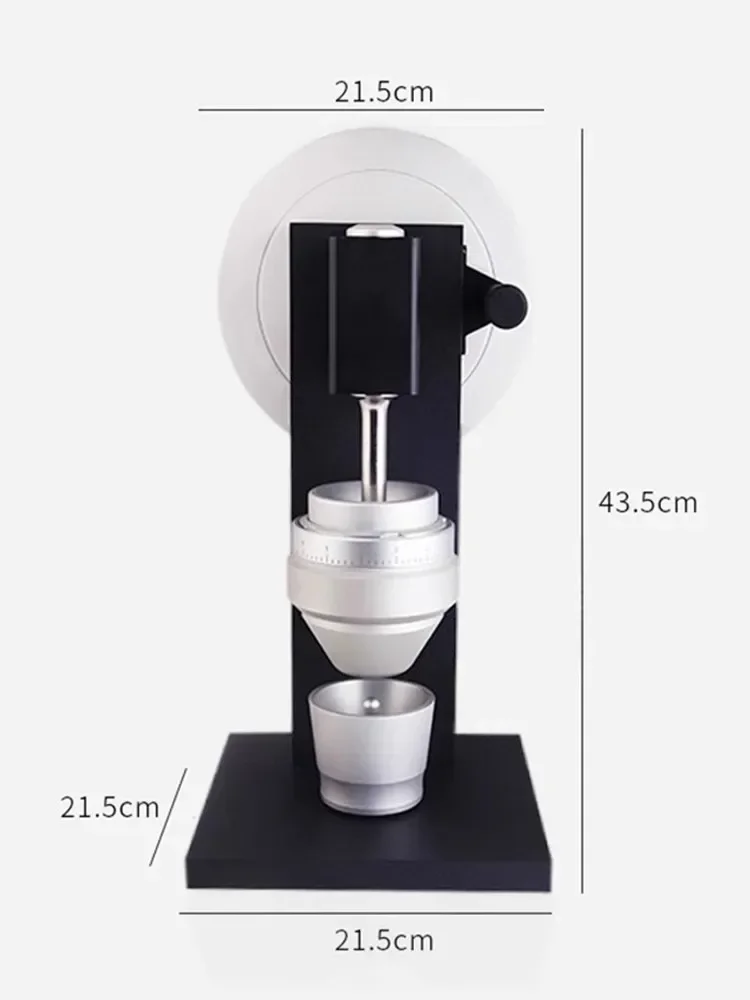
4. When Grinds Go Wrong: Identifying and Solving Extraction Problems
Even small grind size errors can significantly impact your coffee’s flavor. Learning to identify these problems is crucial for consistently excellent brewing.
Under-extraction (grind too coarse) produces:
– Sour, sharp, or overly acidic taste
– Weak body and thin mouthfeel
– Watery appearance with quick brewing time
– Flavor that disappears quickly
Over-extraction (grind too fine) results in:
– Bitter, harsh, or astringent flavor
– Excessive dryness in the mouth
– Dark, sometimes muddy appearance
– Lingering unpleasant aftertaste
For espresso specifically, the visual flow provides immediate feedback. A properly ground espresso should flow like warm honey, producing about 1 ounce in 25-30 seconds. Too fast (under 20 seconds) indicates too coarse a grind; too slow (over 35 seconds) means it’s too fine.
Drip coffee problems are identified primarily through taste and brew time. If your coffee finishes brewing too quickly and tastes sour, you need a finer grind. If brewing takes too long with bitter results, adjust to a coarser setting. Mastering espresso grind settings for the perfect shot helps eliminate these common issues.
When you encounter persistent problems, comprehensive troubleshooting espresso grind issues resources can provide specific solutions to common extraction challenges.
4.1 Taste Troubleshooting Guide
| Flavor Issue | Likely Problem | Solution for Espresso | Solution for Drip |
|---|---|---|---|
| Sour, sharp taste | Too coarse grind | Make grind finer by 1-2 settings | Make grind finer by 1 setting |
| Bitter, harsh flavor | Too fine grind | Make grind coarser by 1-2 settings | Make grind coarser by 1 setting |
| Weak, watery body | Too coarse grind | Make grind finer by 2 settings | Make grind finer by 1-2 settings |
| Muddy, silty texture | Too fine grind | Make grind coarser by 1 setting | Make grind coarser by 2 settings |
| Quick, fast extraction | Too coarse grind | Make grind finer by 2-3 settings | Make grind finer by 1 setting |
| Very slow extraction | Too fine grind | Make grind coarser by 2-3 settings | Make grind coarser by 1-2 settings |
| Channeling (uneven flow) | Inconsistent grind | Improve grinder quality/consistency | Distribute grounds more evenly |
5. The Complete Coffee Grind Chart: Beyond Espresso and Drip
While espresso and drip grinds are the most common, the full spectrum of coffee grinding encompasses many more brewing methods. Understanding this complete range helps place our two main grinds in their proper context:
Extra Fine (Turkish): 100-200 microns – Powdery like flour, used for Turkish coffee where grounds remain in the cup
Fine (Espresso): 200-400 microns – Like granulated sugar, used for espresso machines and Moka pots
Medium-Fine: 400-600 microns – Between sugar and sand, ideal for pour-over methods like V60
Medium (Drip): 600-800 microns – Like kosher salt, perfect for drip coffee makers and Chemex
Medium-Coarse: 800-1000 microns – Like sea salt, suited for Clever Dripper and Café Press
Coarse: 1000-1400 microns – Like breadcrumbs, ideal for French Press brewing
Extra Coarse: 1400+ microns – Like peppercorns, designed for cold brew steeping
Each grind size corresponds to a specific brewing time and pressure combination. Shorter brew times and higher pressure (espresso) require finer grinds; longer brew times with lower pressure (cold brew) need coarser grinds.
Precision manual grinders capable of producing consistent grinds across this spectrum are invaluable tools for coffee enthusiasts who enjoy multiple brewing methods.
5.1 Identifying the Perfect Grind Without Special Tools
You don’t need laboratory equipment to evaluate your grind size. These practical tests can help you identify if you’re in the right range:
The Pinch Test:
– Espresso grind should feel like fine powder or sugar with barely perceptible grains
– Drip grind should feel distinctly granular, similar to sand or kosher salt
The Visual Test:
– Espresso grind resembles powdered sugar or flour
– Drip grind looks like regular table salt or sugar
The Rubbing Test:
– Rub espresso grounds between fingers—they should feel smooth with minimal grittiness
– Drip grounds feel obviously gritty but not sharp or chunky
Household Comparisons:
– Espresso: Fine granulated sugar or flour
– Drip: Table salt or raw sugar
If you’re between sizes or uncertain, err slightly finer for espresso and slightly coarser for drip. You can always adjust based on your brewing results.
6. Choosing and Using the Right Coffee Grinder
The quality of your grinder directly impacts your brewing success. While blade grinders chop beans randomly, burr grinders crush them between two surfaces to produce uniform particle sizes—critical for even extraction.
Burr Grinder Advantages:
– Consistent particle size (up to 70% more uniform than blade grinders)
– Adjustable settings for precise size control
– Less heat generation during grinding (preserving flavor)
– Better flow rate control in brewing
Conical vs. Flat Burrs:
– Conical burrs: More forgiving, less heat, ideal for home use
– Flat burrs: More precise, consistent for specialty applications
Manual vs. Electric:
– Manual: Greater portability, no electricity needed, often more affordable
– Electric: Convenience, speed, less physical effort
Quality manual burr grinders offer exceptional value—providing professional-grade grinding without the high cost of electric models. The precision adjustment systems in premium manual espresso grinders allow for the fine-tuning necessary for perfect espresso extraction.
For those brewing multiple methods, versatile hand burr grinders provide the flexibility to quickly adjust between espresso, drip, and other brewing techniques.
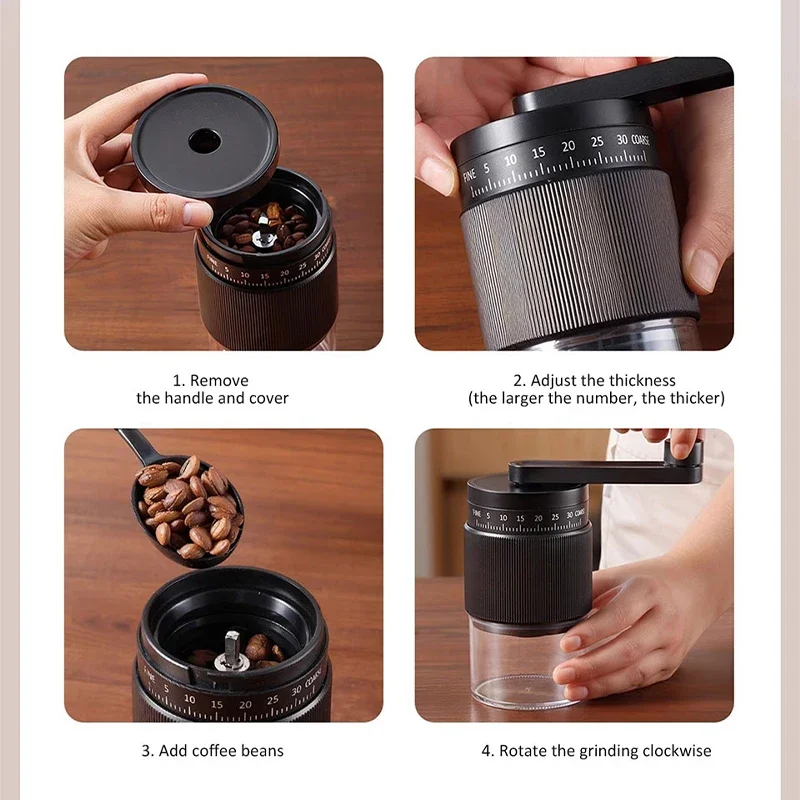
Fine Adjustment Hand Grinder, Precision Manual Grinder, Travel Coffee Grinder
Price range: $185.11 through $494.63 Select options This product has multiple variants. The options may be chosen on the product pageHand Burr Grinder, Hand Crank Coffee Grinder, Manual Espresso Grinder, Portable Coffee Grinder
Price range: $262.72 through $300.22 Select options This product has multiple variants. The options may be chosen on the product pageHand Burr Grinder, Manual Coffee Grinder Stainless Steel, Precision Manual Grinder
Price range: $183.64 through $187.52 Select options This product has multiple variants. The options may be chosen on the product pageCeramic Burr Coffee Grinder, Hand Burr Grinder, Hand Crank Coffee Grinder, Manual Coffee Bean Grinder
Price range: $59.17 through $59.96 Select options This product has multiple variants. The options may be chosen on the product page
6.1 Mastering Your Grinder: Dialing In For Perfect Extraction
Finding your ideal grind setting is a methodical process:
Step 1: Start with the manufacturer’s recommendations
Begin with the suggested setting for your brewing method (espresso or drip).
Step 2: Brew and evaluate
Make coffee and assess both the brew time and taste.
Step 3: Make small adjustments
– For espresso: Change in 1-2 click increments
– For drip coffee: Change in 1 click increments
Step 4: Record your results
Note your settings, brewing time, and taste outcomes.
Step 5: Maintain consistency
Use the same:
– Coffee dose
– Water temperature
– Brewing technique
Common Adjustment Mistakes:
– Making too large adjustments between tests
– Changing multiple variables simultaneously
– Not allowing the grinder to clear previous grounds before testing
Cleaning your grinder regularly is essential for consistent results. Burrs should be brushed clean, and retention spaces should be cleared of old grounds that could contaminate your fresh grind.
7. Beyond The Basics: Advanced Grind Considerations
As you refine your coffee preparation, several advanced factors affect optimal grind settings:
Bean Origin and Variety:
Different beans have varied density and hardness, affecting how they grind. For example, dense high-altitude beans often benefit from a slightly coarser grind than softer, low-altitude varieties.
Roast Level:
– Darker roasts: More brittle and easier to extract—typically need slightly coarser grinds
– Lighter roasts: Denser and harder to extract—often require slightly finer grinds
Bean Age:
Fresh beans contain more CO2 and create more resistance during brewing. As beans age:
– 1-14 days after roasting: May need slightly coarser grind
– 2-4 weeks after roasting: May need slightly finer grind
Ambient Conditions:
Humidity dramatically affects grinding and extraction:
– Higher humidity: Grounds absorb moisture and may need to be slightly coarser
– Lower humidity: Drier conditions may require slightly finer grinds
The process of mastering perfect espresso through grind adjustments requires attention to these subtleties, particularly when working with different coffee origins or during seasonal changes.
7.1 Can You Use Espresso Grind for Drip Coffee (or Vice Versa)?
While it’s always best to use the correct grind for each brewing method, understanding what happens when you don’t can help in emergency situations.
Using Espresso Grind for Drip Coffee:
– Water flow becomes extremely slow
– Over-extraction occurs almost immediately
– Bitter, harsh flavors dominate
– Filter clogging is common
– Brewing time extends dramatically
Emergency solution: If you must use espresso grind in a drip maker, try reducing brewing time by using less water, reducing the dose, or brewing at a cooler temperature.
Using Drip Grind for Espresso:
– Water channels through grounds too quickly
– Under-extraction results in sour, weak espresso
– Little to no crema forms
– Shot pulls in 10-15 seconds instead of 25-30
Emergency solution: Try increasing your dose slightly and tamping more firmly to create additional resistance.
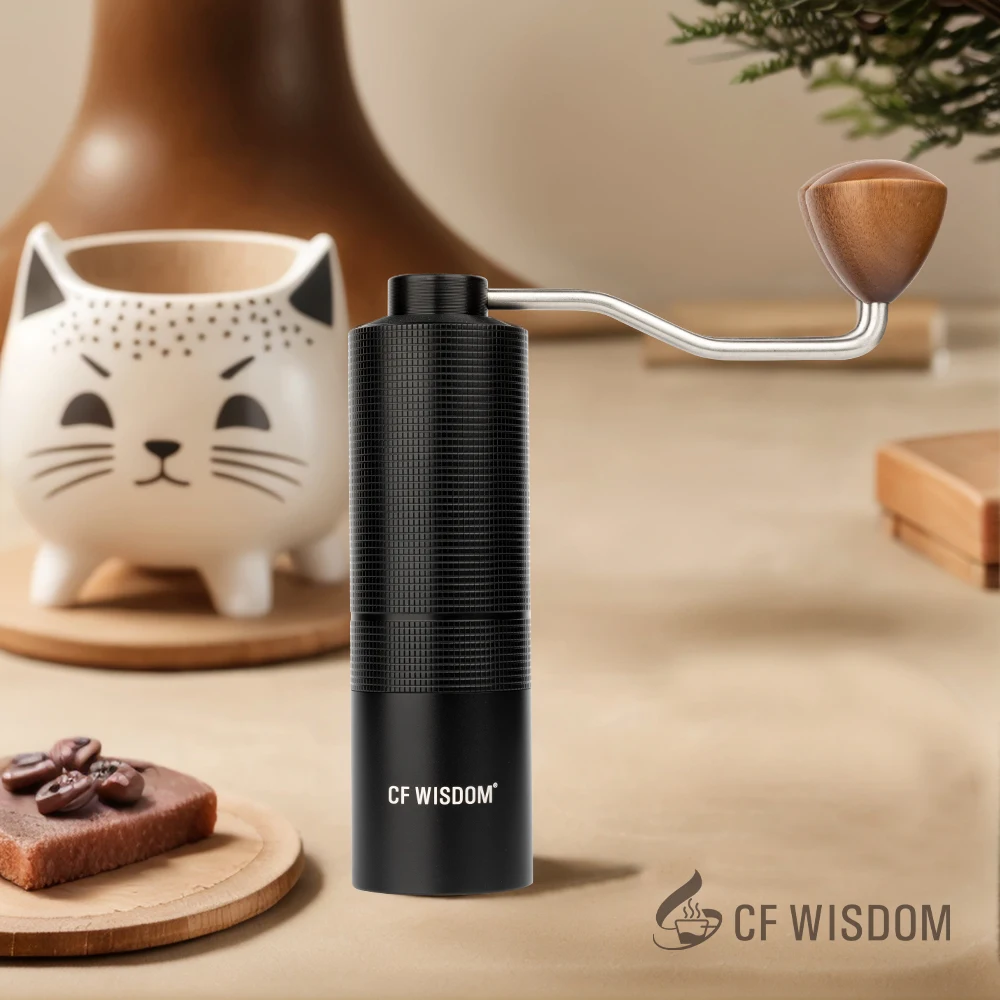
Pre-ground coffee presents particular challenges because you can’t adjust its size. When using pre-ground coffee, you’re better off matching the brewing method to the grind rather than trying to force a mismatch.
8. Freshness Matters: Why and When to Grind Your Coffee
Coffee begins losing flavor compounds immediately after grinding. Studies show up to 60% of aroma compounds can dissipate within 15 minutes of grinding, making fresh grinding one of the most impactful ways to improve your coffee.
Key freshness timelines:
– Whole beans: Optimal for 2-4 weeks after roasting
– Ground coffee: Best used within 30 minutes of grinding
– After 24 hours: Ground coffee loses approximately 70% of its distinctive aromatic compounds
This rapid deterioration explains why coffee professionals insist on grinding immediately before brewing. The advantage of portable coffee grinders is that they enable this freshness anywhere, ensuring optimal flavor extraction whether at home or traveling.
For storage, keep whole beans in an airtight container away from light, heat, and moisture. Never store beans in the refrigerator or freezer, as they’ll absorb odors and moisture that compromise flavor.
The freshness factor reinforces why investing in a quality grinder is as important as buying premium beans—even the finest coffee in the world cannot overcome the flavor loss from pre-ground or improperly ground beans.

